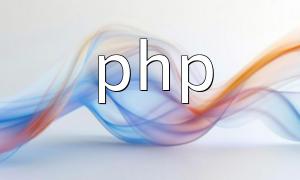In PHP development, deep copying arrays is essential for manipulating data without affecting the original array. Different methods vary in efficiency, complexity, and suitability. This article explores common deep copy techniques with practical examples and analysis.
The clone keyword creates a shallow copy of an array, duplicating only the top-level elements. Nested arrays or objects still reference the original array values, making this suitable for arrays with few nested elements.
Applying clone to each element of the array creates a deep copy. However, this method relies on recursion and can be less efficient for arrays with many nested elements.
This approach converts the array to a JSON string and then back to an array using json_encode() and json_decode(). It creates a deep copy but is less efficient and consumes more memory, suitable for simple arrays.
Using a recursive function to traverse the array and generate a new array creates a deep copy. This method is flexible and efficient, but complex arrays may require more code.
Third-party libraries (such as DeepCopy) provide efficient solutions for deep copying complex arrays and are suitable for general development needs.
Consider a multidimensional array with nested elements:
$original = [
'name' => 'John Doe',
'address' => [
'street' => 'Main Street',
'city' => 'New York'
]
];Here is an example of testing the performance of array_map(clone):
$start = microtime(true);
$copy = array_map('clone', $original);
$end = microtime(true);
$time = $end - $start;
echo "array_map(clone): $time seconds\n";Other methods can be tested similarly for comparison.
| Method | Efficiency | Complexity | Applicability |
|---|---|---|---|
| clone | High | Low | Shallow copy |
| array_map(clone) | Medium | High | Arrays with many nested elements |
| JSON conversion | Low | Low | Small, simple arrays |
| Recursive function | High | High | Complex arrays |
| Third-party library | High | Medium | General use |
There are multiple ways to deep copy arrays in PHP. For high-performance arrays with minimal nesting, clone or a third-party library is recommended. Recursive functions are ideal for complex arrays due to flexibility. JSON conversion works for simple arrays but has lower efficiency.









